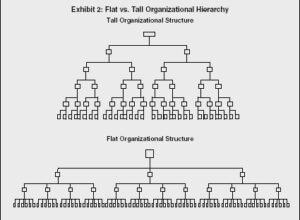Healthcare Organization Project 3
Functional, divisional, and matrix structures
Functional organizational structures utilize the traditional departmental approach. Individuals with similar responsibilities and abilities are found in the same department. For instance, the marketing department hosts all individuals dealing with marketing activities. It eases communication, learning, and teamwork. However, the structure presents the threat of failing to learn about other parts of an entity and current happenings. The individual departments may be engrossed in the events that concern their department and ignore others. This may affect the organization’s performance as teamwork becomes inefficient (SHRM, 2021).
The divisional structure categorizes people based on the services or products they produce instead of their responsibilities. In a healthcare facility, the different departments may have other sectors within them. For instance, the emergency response, reproductive, and physiotherapy departments may each have their own accountants. This structure leads to duplication of resources, which may be costly for the entity. In addition, it results in the independence of each section, which may affect the organizational goals. However, it is evident in terms of hierarchy and eliminates any confusion. Communication within the department is easy, as well as teamwork to deliver goals (SHRM, 2021).
The matrix structure combines the functional and divisional structures. Employees in a certain department may report to multiple leaders. This structure can create confusion due to a lack of clear hierarchy but also allows for the creation of high-performing teams. Communication is critical when using the matrix structure to avoid clashing among leaders and employees. It offers the chance to create effective teams as members who can deliver are picked from different sections (SHRM, 2021).
A typical structure in healthcare organizations
The matrix structure is typical in a healthcare organization because of various reasons. First, most healthcare entities seek to provide patient-centered care. Such care requires input from different individuals who are in various departments. As a result, the individuals form teams to deliver the best care possible regardless of their departments. In such cases, the team members may report to multiple leaders because the elements of care are widespread in the healthcare setting (Fiorio, Gorli, & Verzillo, 2018).
A tall organizational chart and a flat chart
The tall structure clearly has more levels of managers than the flat structure. The numerous levels of managers affect the decision-making process, which tends to take longer. In addition, communication with clients is limited because only healthcare workers in the lower levels interact with patients during service delivery. This may affect the quality of care that patients receive since the process of obtaining approval, especially when feedback is provided, is lengthy. Teamwork is entirely dependent on the managers because employees have less autonomy to make decisions. This means that the team members may seem lost simply because they cannot make decisions fast or obtain approval from managers.
The flat structure offers benefits that the tall structure lacks. In terms of communication, employees at all levels can easily communicate. This means that decision-making is faster and could lead to better care as feedback is taken into consideration. Additionally, patients can easily access top-level managers and obtain assistance. Employees can also seek approval or permission to take certain actions rapidly without unnecessary delays. Access to leaders promotes the care that patients receive significantly. Leaders are reasonably accessible to both patients and employees. In addition, teamwork is evident as information flows faster upwards or downwards (Bogaert, Peremans, & Diltour, 2016). The employees can deliver more efficient results when working as a team simply because the extensive bureaucracies are simplified.
References
Bogaert, P. V., Peremans, L., & Diltour, N. (2016). Staff Nurses’ Perceptions and Experiences about Structural Empowerment: A Qualitative Phenomenological Study. PLOS ONE, 11(4). doi:10.1371/journal.pone.0152654
Fiorio, C. V., Gorli, M., & Verzillo, S. (2018). Evaluating organizational change in health care: the patient-centered hospital model. BMC Health Serv Res., 18(95). doi:10.1186/s12913-018-2877-4
SHRM. (2021). Understanding Organizational Structures. Retrieved from https://www.shrm.org/resourcesandtools/tools-and-samples/toolkits/pages/understandingorganizationalstructures.aspx
ORDER A PLAGIARISM-FREE PAPER HERE
We’ll write everything from scratch
Question
The structure of a healthcare organization reflects the healthcare needs of the population. The organizational chart depicts the structure and tells you about the hierarchy in the organization, responsibilities, communication channels, and reporting. Some structures have many levels, whereas others have few levels. Healthcare organizations may adopt simple, functional, divisional, or matrix structures.

Healthcare Organization Project 3
This week, you will present a chart on organizational structure to your healthcare manager and colleagues. Include the following in your report:
Provide a brief on functional, divisional, and matrix structures.
Which type depicts a typical structure in healthcare organizations?
Give 3 advantages and 3 disadvantages of each structure.
Include a sample of a tall organizational chart and a flat chart.
Describe how the tall and flat structures affect communication, teamwork, and patient care in the healthcare organization.
Deliverable Requirements


